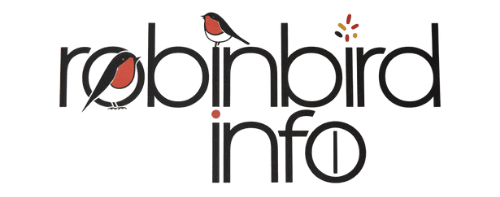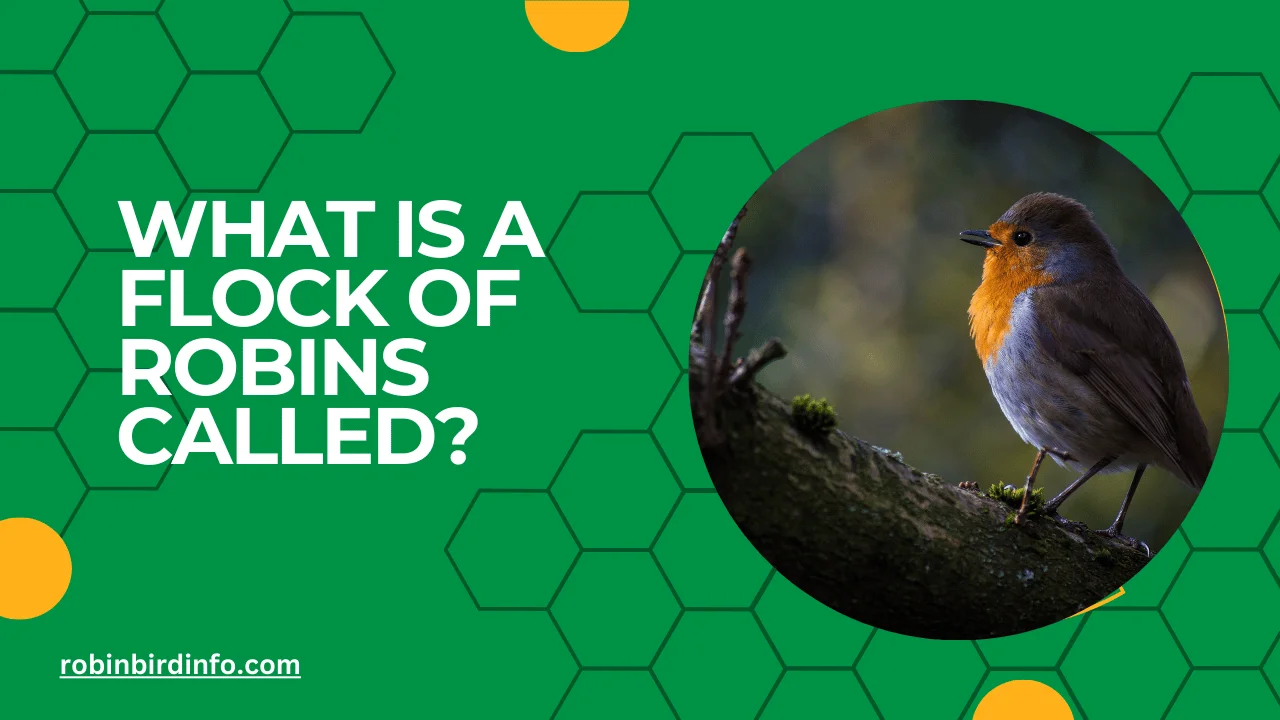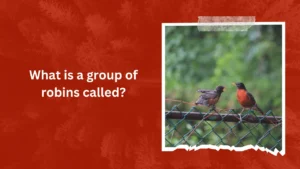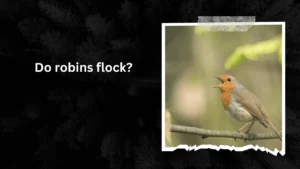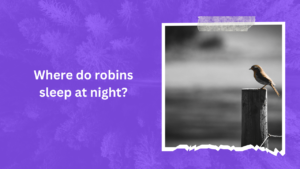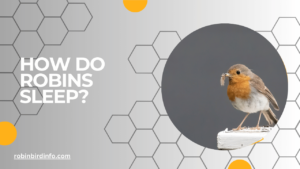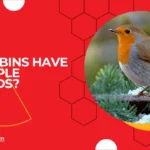Have you ever been strolling through a park on a crisp autumn day, only to be startled by a cacophony of chirps and a flurry of reddish-orange feathers?
Witnessing a large group of Robins, seemingly engaged in a lively debate, can be a truly captivating sight. But what exactly do we call this gathering of these beloved birds?
The question of collective nouns, those unique terms for groups of animals, can be surprisingly intriguing. While most of us are familiar with terms like “flock” or “pride,” the specific collective noun for Robins remains a bit of a mystery. This blog post delves into the fascinating world of Robin terminology.
We’ll explore the most common term used to describe a group of Robins, delve into some lesser-known alternatives, and uncover the origins and cultural significance of these curious phrases.
So, grab a cup of tea, settle in, and prepare to be surprised by the rich tapestry of language surrounding these familiar feathered friends!
Contents
Section 1: The Most Common Collective Noun: A Blush
The most commonly used collective noun for a group of Robins is a blush. This term evokes a vivid image of a group of these birds, their red breasts blending together like a rosy hue. The term “blush” is particularly fitting, as it suggests a sense of collective beauty and warmth.
The origin of the term “blush” as a collective noun for Robins is uncertain, but it likely stems from the bird’s distinctive coloration. The term’s poetic and evocative nature has made it a popular choice among writers and poets.
Section 2: Other Collective Nouns for Robins
While “blush” is the most common term, other collective nouns for Robins have been used throughout history. Some of these less common terms include:
- Bobbin: This term may be associated with the idea of a group of Robins hopping and bobbing around.
- Breast: A simple and straightforward term that references the distinctive red breast of the Robin.
- Carol: This term may be linked to the melodious songs of Robins.
- Gift: This term could be associated with the joy and beauty that Robins bring to our lives.
- Reliant: This term might suggest the reliance of Robins on each other for survival and protection.
- Riot: This term could refer to the vibrant and energetic nature of a group of Robins.
- Rouge: This term emphasizes the reddish-orange color of the Robin’s breast.
- Round: This term may suggest the circular formation that Robins sometimes adopt when they gather together.
- Ruby: This term directly references the rich, red color of the Robin’s breast.
- Worm: This term may be linked to the Robin’s diet, which often includes worms.
The use of these terms can vary across different regions and historical periods, reflecting the diversity of language and culture.
Section 3: The Origin and Evolution of Collective Nouns
Collective nouns have their origins in ancient times, when people sought to describe groups of animals and objects in a poetic and imaginative way. These terms often reflect cultural beliefs, folklore, and mythology.
The cultural significance of collective nouns lies in their ability to evoke strong visual and emotional responses. They can add color and depth to language, making it more expressive and evocative.
In modern times, collective nouns are still used in everyday language and literature. However, their usage has become less frequent, with many people opting for simpler terms like “group” or “flock.”
Section 4: The Behavior of Robins in Groups
Robins are typically solitary birds, but they may form flocks during certain times of the year, such as migration or winter. These flocks can range in size from a few individuals to hundreds of birds.
The social structure of Robin groups is relatively simple. They often form loose associations, with individual birds maintaining a degree of independence. However, they may cooperate in certain activities, such as foraging and defending territories.
Flocking behavior can provide several benefits to Robins, including increased vigilance against predators, improved foraging efficiency, and enhanced thermoregulation during cold weather.
Robins communicate within groups using a variety of vocalizations and body language. Their songs and calls can convey information about territory, mating, and the presence of predators.
Section 5: The Conservation of Robins
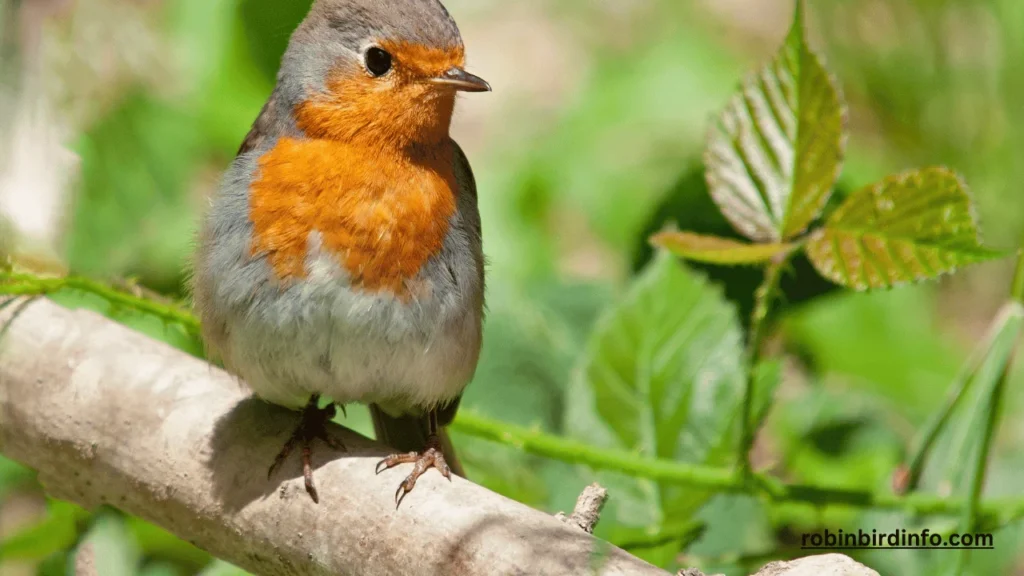
Threats to Robin populations include habitat loss, climate change, and the use of pesticides. The loss of natural habitats, such as forests and woodlands, can reduce the availability of nesting and foraging sites for Robins.
Conservation efforts are essential to protect Robin populations. These efforts include habitat restoration, pesticide reduction, and public awareness campaigns. By creating and maintaining bird-friendly habitats, we can help ensure the survival of Robins and other bird species.
Citizen science and birdwatching play a crucial role in monitoring Robin populations and identifying potential threats. By participating in birdwatching activities and reporting sightings, individuals can contribute to valuable research and conservation efforts.
Conclusion
The collective noun “blush” is a fitting description for a group of Robins, evoking the visual image of their vibrant red breasts. While other terms may be used to describe these social birds, “blush” remains the most common and evocative choice.
By understanding the cultural and linguistic significance of collective nouns, we can appreciate the rich tapestry of language and the human fascination with the natural world. By protecting Robin habitats and promoting conservation efforts, we can ensure that these beautiful birds continue to grace our landscapes for generations to come.
FAQ’s
Why do Robins form flocks?
Robins may form flocks for various reasons, including increased protection against predators, improved foraging efficiency, and enhanced thermoregulation during cold weather.
When are Robins most likely to form flocks?
Robin flocks are more common during the winter months when food sources may be scarce. They may also form flocks during migration.
Do Robins migrate in flocks?
While Robins may form small flocks during migration, they are not typically highly migratory birds. They tend to migrate short distances, often staying within their breeding range.
Robins are generally solitary birds, especially during the breeding season. However, they may form loose social groups outside of the breeding season.
What is the largest recorded flock of Robins?
There is no specific record of the largest recorded flock of Robins. However, large flocks can sometimes gather in areas with abundant food sources, such as berry bushes or insect-rich habitats.
How can I attract Robins to my yard?
To attract Robins to your yard, you can provide a variety of food sources, such as birdseed, mealworms, and fresh fruit. You can also create a bird-friendly environment by planting native plants, offering clean water sources, and providing nesting sites.
